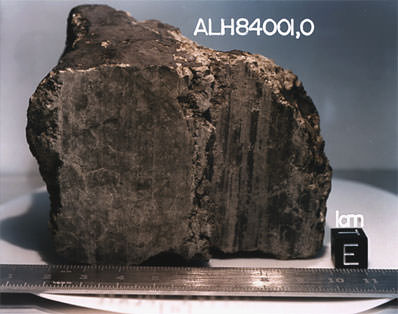NASA scientist, Dr. David S. McKay has passed away. He may be best known for his paper about a Martian meteorite, ALH84001, which presented an argument that it contained evidence for life on Mars. McKay had been battling serious cardiac health problems for some time, according to an announcement from Johnson Space Center, and he died peacefully in his sleep in the early morning hours of February 20, 2013.
McKay had been the Chief Scientist For Astrobiology at NASA and searched for evidence of past life on Mars using Martian meteorites and terrestrial analogs. He performed original research on lunar soils, lunar pyroclastics, and space weathering.
McKay joined NASA in June of 1965 and participated extensively in astronaut training up until the Apollo 11 mission. He was named a Principal Investigator to study the first returned lunar samples and continued as a lunar sample PI for the next 20 years. He started many of the laboratories for the Lunar Sample Facility at Johnson Space Center and managed the NASA space resources program out of JSC during much of the 1980s.
McKay published more than 200 peer-reviewed papers on lunar samples, space resource utilization, cosmic dust, meteorites, astrobiology and Mars topics, and NASA said his “body of work includes many contributions to our understanding of the development and evolution of the lunar regolith and space weathering processes.”
Most notably, he was the lead author on the 1996 paper in Science on the ALH84001 Martian meteorite that was found in Antarctica and argued that it contains evidence for life on Mars.
“Although that claim was highly controversial, there can be no question that the appearance of that paper sparked significant changes in martian and planetary science, shaped the direction of the Mars Exploration Program to the present day, and prompted the establishment of the NASA Astrobiology Institute,” said the JSC announcement. “Whether one accepts their arguments or not, it has led, directly or indirectly, to investigations seeking and finding signs of life in the most extreme environments. History will judge the value of that rather serendipitous outcome, but it seems clear that its significance is, and will remain, great.”


